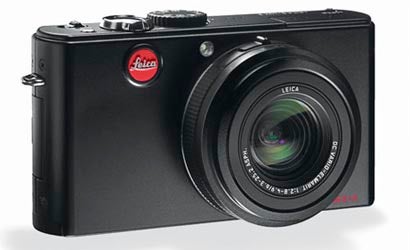Featured User Review: Leica D-Lux 3
Chris Gander writes that the D-Lux 3 gets him one step closer to his ideal of a quality, full-featured pocket camera.

We may earn revenue from the products available on this page and participate in affiliate programs. Learn more ›
What’s Hot: Construction, look and feel is good. Mostly intuitive controls, although takes a little time to get familiar. Display is impressive and can be adjusted.
What’s Not: Not truly pocket size. No viewfinder. Noise above 200 ISO is noticeable — processing within camera can produce muddy images. Lens cap attached to camera.
Review: I bought the Leica D-Lux 3 in my quest for a quality, full-featured, pocket size camera. This is an ongoing mission. I realize every time I am faced with the decision of whether to buy or not, something has to be compromised. The D-Lux 3 is certainly full featured and I love the 16:9 format and ability to shoot RAW images. If I had been prepared to sacrifice these two features and the 10 megapixel resolution, I could have had my pocket-sized camera in the shape of the C-Lux 2.
I have had the camera for about three months now. On the whole I am very pleased. The manual is user friendly, the controls fairly intuitive. In fact it is generally quite a pleasure to use. The camera is slightly too large to fit my pockets comfortably, so I have added a neck strap of my own as only a wrist strap was supplied. The two serious negatives in terms of design are the lack of viewfinder and the annoying lens cap.
Regarding the viewfinder, it is the trend these days to do without one, but it is not just a case of getting used to this — there are two scenarios in which taking pictures can be very challenging without one. Firstly, in bright sunlight there is no practical way to mask the display from the glare and at times it can be extremely difficult to compose, and guesswork has to prevail. Secondly, if your eyesight is anything less than perfect you may need to hold the camera quite a distance from your face. An adjustable strength viewfinder would help enormously.
The lens cap attached by a length of thread is just a clumsy solution. If there had been a way of shutting the lens away from harm when the camera is turned off one would not have to contend with the cap swinging by its thread every time the camera is raised to take a picture. For me this is a disappointment. On the positive side, should you forget to remove the lens cap before switching on, the lens does not extend and a message in the display warns you. Having ruined a Nikon Coolpix 5700 by switching it on while in a tight-fitting case, I really appreciate this feature in the Leica. Of course, if it didn’t have to have a lens cap…
The camera has a number of exposure modes plus a video function. At first I regarded the scene modes as just for beginners; however I have come to appreciate them as a quick way to get the basic settings in place and concentrate on making the picture.
In addition to the usual controls, there is also a joystick which actually I am warming to. It takes hardly any time to become familiar with the menus, so making adjustments is easy. The camera is full-featured but can be used very satisfactorily just as a point and shoot.
Many reviewers have mentioned excessive noise at medium to high ISO settings, however I believe this is endemic to the sort of chip used. I haven’t found it to be an issue yet. I worried for a while that the quality of the images was not up to scratch. Viewing on the camera’s display or even on a computer screen some images would appear muddy and soft when enlarged. Having now printed a couple at A3 size I am reassured that the camera is capable of capturing high quality images.
The case is leather with a nice retro styling. It is not an ER case, so the camera has to be taken from the case for use. As well as a shoulder strap, the case has an integral belt loop.
I still don’t take it everywhere, which is what I had intended. But I’m one step closer to my ideal.
User Reviews do not reflect the opinions of the editors of PopPhoto.com. User Reviews should be used for informational purposes only to help you make an informed choice, not as a definitive authority on what camera or lens is most appropriate for you. Please contact editor@popphoto.com with any problems regarding user review submissions.